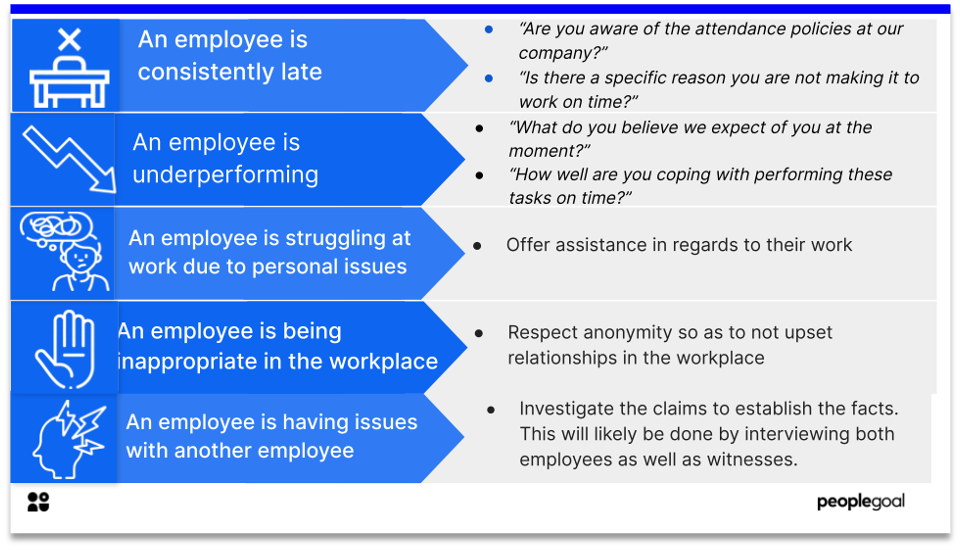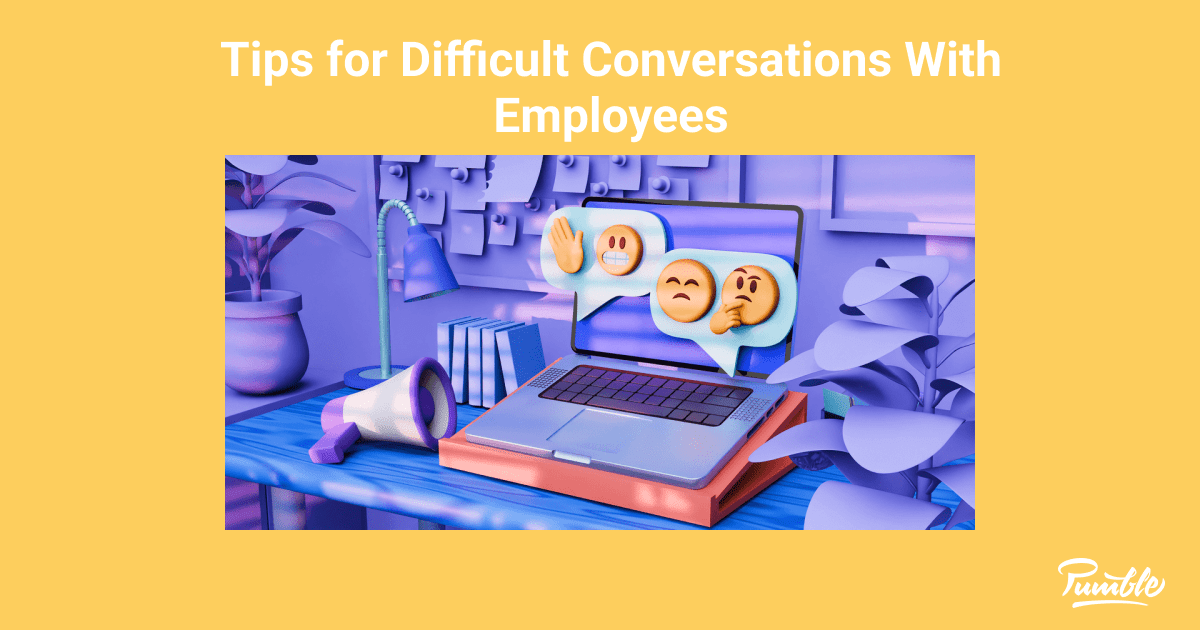Difficult Conversations With Employees Examples

The weight of a manager's responsibility often extends beyond project deadlines and performance metrics. It lies heavily in the often-dreaded but essential realm of difficult conversations. These discussions, ranging from addressing performance issues to navigating workplace conflicts, are pivotal moments that can either strengthen or fracture team dynamics and individual well-being.
The ability to conduct these conversations effectively is not merely a desirable skill but a core competency for successful leadership.
Navigating the Murky Waters of Difficult Employee Conversations
Difficult conversations with employees are inevitable in any organization. They're the necessary, albeit uncomfortable, dialogues that address performance shortcomings, behavioral issues, or changing roles. Mastering these interactions is vital for maintaining a productive, respectful, and legally compliant work environment.
This article explores common examples of these challenging scenarios and provides insights into approaching them with empathy, clarity, and a focus on constructive solutions.
Performance Issues: Addressing Underperformance Constructively
One of the most frequent, and potentially delicate, difficult conversations revolves around performance issues. This could involve consistently missed deadlines, subpar work quality, or failure to meet established goals.
The key is to approach the situation with specific examples and a focus on improvement, rather than solely on criticism. According to a 2023 study by SHRM (Society for Human Resource Management), employees are more receptive to feedback when it is delivered promptly, specifically, and with a focus on future development.
For instance, instead of saying "Your performance is not up to par," a manager could say, "I've noticed that the last three reports were submitted after the deadline, which impacted the team's ability to finalize the project. Let's discuss what challenges you're facing and how I can support you in meeting deadlines moving forward."
Behavioral Concerns: Addressing Inappropriate Conduct
Addressing inappropriate behavior, such as disrespect, bullying, or insubordination, requires immediate and decisive action. These behaviors can create a toxic work environment and negatively impact employee morale and productivity.
Document all incidents thoroughly, adhering to company policy and legal guidelines. Consult with HR to ensure a fair and consistent approach.
In a scenario where an employee is consistently interrupting colleagues during meetings, the manager might say, "I've observed that you've been interrupting others during team meetings. While I appreciate your enthusiasm, it's important that everyone has a chance to share their thoughts respectfully. Let's work on ensuring that everyone's voice is heard."
Role Changes and Layoffs: Delivering Difficult News with Dignity
Communicating news about role changes, restructuring, or layoffs is arguably one of the most challenging tasks a manager faces. These situations involve significant emotional impact and require utmost empathy and transparency.
Provide clear and honest reasons for the change, and offer support resources such as career counseling or severance packages. According to a 2022 Gallup poll, employees who feel that they were treated fairly during a layoff are more likely to recommend their former employer.
Transparency is key to maintaining trust and minimizing negative impact. When explaining a role change, a manager could say, "Due to a company restructure, your current role is being eliminated. We understand this is difficult news, and we are committed to supporting you through this transition with [mention specific resources]."
Conflict Resolution: Mediating Disputes Between Employees
Conflicts between employees are inevitable, but how they are addressed can significantly impact team cohesion. Managers need to act as mediators, facilitating open communication and helping employees find common ground.
Encourage active listening and ensure that each party feels heard and understood. Focus on finding solutions that address the underlying issues, rather than simply assigning blame. HR intervention may be required for serious disputes.
For instance, "I've noticed some tension between the two of you, and I want to understand what's going on. Let's each share our perspective, focusing on the specific issues and avoiding personal attacks. My goal is to help you find a way to work together effectively."
The Art of Effective Communication
Beyond the specific scenario, effective communication skills are crucial for navigating any difficult conversation. This includes active listening, empathy, clear articulation, and a focus on solutions.
Active listening means paying attention not only to what is being said, but also to the nonverbal cues and emotions behind the words. Empathy involves understanding and acknowledging the other person's perspective, even if you don't agree with it. Clear articulation ensures that your message is understood, and focusing on solutions demonstrates a commitment to positive outcomes.
As Brené Brown, a renowned researcher on vulnerability and leadership, stated: "Clear is kind. Unclear is unkind."
Looking Ahead: Cultivating a Culture of Open Communication
Ultimately, the goal is to cultivate a workplace culture where difficult conversations are seen not as something to be avoided, but as opportunities for growth and improvement. Regular feedback, open communication channels, and a commitment to employee development can help to create such an environment.
By investing in training and development for managers, organizations can equip them with the skills and confidence they need to navigate these challenging conversations effectively. This leads to a more engaged, productive, and resilient workforce.
The future of work hinges on the ability to have open and honest dialogues. Embracing difficult conversations as opportunities for growth and fostering a culture of transparency will be essential for organizations to thrive in the years to come.

















